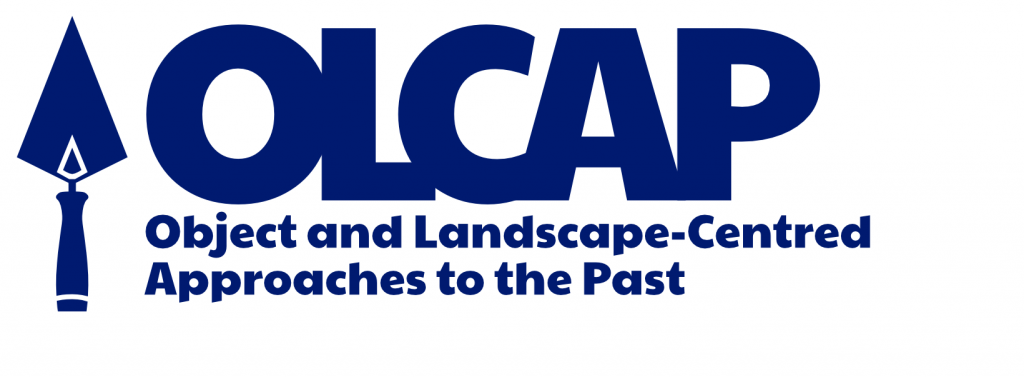Launching OLCAP (the research group for Object and Landscape Centred Approaches to the Past): Swansea in the Sudan!
Launching OLCAP!
 OLCAP – the research group for Object and Landscape Centred Approaches to the Past is new to the College of Arts and Humanities. The group’s core aim is to promote and support research, teaching, and training that falls broadly in the fields of material culture studies and landscape, especially where these relate to the ancient world. There are three main, related strands of our mission: Research, Pedagogy, Training and Employability. You can read more about these on OLCAP’s webpage. On 14th October, OLCAP celebrated its official launch and we introduced these aims to staff and students across COAH to explore research synergies and potential future collaborations. The kick-off event was a wonderful opportunity to advertise our annual programme – details of which can also be found here: OLCAP 2019 2020 Events. This term we particularly look forward to hosting our first (of many!) termly core skills training workshops, ‘Mapping Material Culture’ where our students will have the chance to practice mapping the landscape in preparation for archaeological investigation! This will take place on 09.11.19 at Singleton Campus, 11.00-16.00.
OLCAP – the research group for Object and Landscape Centred Approaches to the Past is new to the College of Arts and Humanities. The group’s core aim is to promote and support research, teaching, and training that falls broadly in the fields of material culture studies and landscape, especially where these relate to the ancient world. There are three main, related strands of our mission: Research, Pedagogy, Training and Employability. You can read more about these on OLCAP’s webpage. On 14th October, OLCAP celebrated its official launch and we introduced these aims to staff and students across COAH to explore research synergies and potential future collaborations. The kick-off event was a wonderful opportunity to advertise our annual programme – details of which can also be found here: OLCAP 2019 2020 Events. This term we particularly look forward to hosting our first (of many!) termly core skills training workshops, ‘Mapping Material Culture’ where our students will have the chance to practice mapping the landscape in preparation for archaeological investigation! This will take place on 09.11.19 at Singleton Campus, 11.00-16.00.
OLCAP’s first sponsored post on Hieroglyphs, Heroes, and Heretics is a report from Dr Christian Knoblauch (Lecturer in Egyptian material Culture) about his collaboration with Brown University and their excavations in the Sudan. If you would like to hear more about the project, Christian will be giving a talk at 3pm on Tuesday 29th of October at Singleton Campus, Keir Hardie Building Room 429 as part of the CLAHE Research Seminar Series.
Swansea in the Sudan

The first ever Swansea-Brown Uronarti Regional Archaeological Project team on site in the Sudan, January 2019 (image 1). The project is co-directed by Dr Christian Knoblauch (Swansea, far right) and Dr Laurel Bestock (Brown, front left). In the background, there is the remains of the massive mudbrick gateway that controlled entry into the Middle Kingdom fortress – the focus of our work. Although it is almost 4000 years old, the fortress still stands in places to a height of 7 metres. In the foreground is a back-filled administrative building excavated by the team where we were able to observe, for the first time, the arrival of the Egyptians at the site and their organisation of a mammoth building project. Beyond the fortress, looking south, one can see Lake Nasser/Lake Nubia and the desert adjacent to the ancient border with Kush at the Semna Nile Cataract. During the season, we conducted a systematic survey (image 2) of these areas in order to contextualise the fortress in wider settlement and activity patterns. A report on this last aspect of the work has been accepted for publication by Antiquity and will appear in the Project Gallery shortly.

One interesting aspect of the season was the recording and micro-morphological sampling of an intact column of stratigraphy (image 3) Such well-defined occupation layers are a rarity due to the clearing of most of the interior of the fortress in the 1930’s.

We are hopeful the final scientific analysis of the layers and artefacts will shed light on the changing nature of the occupation of the site over two and a half centuries. Finds from these layers included fish-bones and angling equipment, administrative seals, stone arrowheads and some remarkably well preserved textiles (image 4).

There was also time to conduct a condition report of the New Kingdom stone temple that has suffered considerable damage in recent years. An inventory of all decorated blocks (e.g. image 5) was compiled and recommendations were made to our partner, the National Corporation of Museums and Antiquities concerning conserving the structure and making it better accessible to other scholars and the public in the future. We plan to continue this work in early 2020.

The author thanks the COAH Research Fund for enabling his participation in the project in January 2019. Images courtesy of URAP.

Pingback: OLCAP Workshop – Hieroglyphs, Heroes, and Heretics